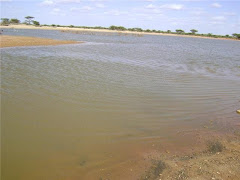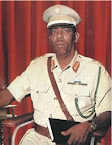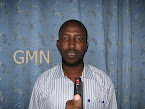Introduction
Abudwaq (also Abudwaq and Caabudwaaq) is one of the largest towns in the Galgadud region of central Somalia. Abudwaq is the seat of the Abudwaq District of the Galgadud Region. The town is situated about 20km west off of the main corridor road that connects southern and northern regions of Somalia.
The residents of Abudwaq have had their changing history in modern day Somalia with its civil war and endless local conflicts. Abudwaq City has seen enormous growth in terms of population.
Recent history
In the absence of strong local government, Abudwaq’s residents have had their share of Somali political unrest throughout the 1990s and recent times. The city’s most memorable times were during 1992-1996 when it became the hub for business and trade in central Somalia. The residents then developed well-organized peace system where it was possible for merchants from neighboring regions such as Hiiraan on the south to all the way to northern cities of Hargeisa and Bari were able to sell or exchange their commodities at the Abudwaq Market.
Abudwaq allowed safe passages for transport trucks and small vehicles to freely move on either direction, south or north. The city’s population more than tripled from around 30,000 inhabitants to over 100,000 residents.
In prior years the town has been prosperous even while much of the rest of Somalia was suffering from starvation and insecurity. Those years where known throughout Somalia as Sanadadii Cagobararka or Years of Swollen Feet. This was due to lack of nutritional meals for days at a time. It was at the height of the civil war from 1991-1994 when people went without any food for days at a time. Interior regions and the capital were the most affected areas by this phenomenon of swollen feet. Images of starving Baidoa residents were beamed to television screens around the world.
Geography
Abudwaq and surrounding area is red sandy with semi desert look. Further into the grazing lands near the border with Ethiopia’s Somali Province, one finds forest and mountains where mostly camels are herded.
Commerce in Abudwaq
Abudwaq region has some of the richest grazing lands in the region. Economy mostly depends on livestock, food commodities and household products trading. All four main livestock types camel, cattle, sheep and goats herded here. Various Abudwaq markets are also supported by smaller towns such as Balanbal and Dhusa Mareb. Another economic sector which has been growing over the years is the construction and building sector. Construction activities in Abudwaq for office spaces, warehouses and private homes have been on the rise.
On the fledgling agriculture sector, there are family farms on the outskirts of Abudwaq city.
These farmers grow many of the basic vegetables and fruits such as onions, tomatoes, hot peppers, papyas, dates, green peppers, carrots, watermelon, and beans. Traditional farm productrs which still are farmed include maize, sorghum and semsemi. Here also people harvest various types tree gums and other sweet smelling and naturally produced products such as myrrh and punt. The closest river is hundreds of kilometers away so residents cultivate small farms for own consumption and sometimes for sale at the vegetable and fruit market.
Drought of 2008
As food shortages are hurting people across the globe, Somalia is even in worse situation as there is no government to come to the people’s rescue. Regions with low water supply have been hit the hardest. People as well as farm animals are affected by the lack of water and food. Abudwaq area people are suffering greatly during this drought season. Food prices have skyrocketed and many households are left to fend for their families.
Friends of Abudwaq in the United States have organised a drive to send some cash and food donations to families back in Abudwaq and Balanbal areas.
Rainy seasons in Somalia have been changing drastically. For example, the deyr rainy season of 2007 rained more than usual. The rains left this sandy city in puddles and natural pools everywhere.
Until the gu’ rains arrive, the situation will not change much.
Education
Ever since the national education system was rendered nonexistent, the local educators and business people in Abudwaq with the help of Abudwaq Diaspora, have established small but growing education system. Currently there are two primary and middle Schools.
Koranic study circles are most reliable education system throughout Somalia. Children ages 5 to 14 attend either morning or afternoon Quranic dugsi or Madrasa. Parents register their whenever parents can afford to pay the fees associated primary to high schools.
The school system is supported by NGOs who are based overseas and they are IQRA and HIRDA. There is also one high school with brand new building completed together by IRQA and [HIRDA].
Government
Like most other places in Somalia today,Caabudwaaq has no formal local government or strong authority to keep law and order and to provide essential services to the community. But there is at least, clan based counselling assembly to solve in a traditional way of day to day disputes arguments.
Caabudwaaq’s clan elders and business community are the closest thing to government, mediating a range of disputes from criminal acts to traffic arguments. If in case,one resident slays another, elders from various subclans who are well respected wisemen in the region, decide whether the aggrieved family will receive a payment of camels or cash equivalenet or whether the accused will be executed.
The Caabudwaaq council elders are doing whatever necessary to punish the criminals and to encourage more execution in order to minimaze people from killing. Yet the elders acknowledged they cannot carry the society on their shoulders a local government needed, because the elders are confined only to solving family problems.
balayaax@hotmail.com
skip to main |
skip to sidebar




































garonka abudwaq

xulka magalada abudwaq

Bilicda magalada masha allaah

ceel sacudi

Bankii Cabudwaaq

Biyo magalada galay

Bali kabiir

Wadado kamida wadoyinka abudwak kabaxa

Arigii Cabudwaaq

Canyadii siiga dhere

Bali dabaxar.

Xurfada abudwak

Geelkii Cabudwaaq

Geelkii Cabudwaaq


Hormuud cabudwaq

dhismaha cabudwaq

dhismaha cabudwaq

Search This Blog
mulkilaha blogan (mohamed balayaax)

ayanle mohamud salad

somalia flag

Aadan Cadde

cabdirashiid cali sharmaarke

Mohamed siyad bare

cabdi qaasim

cabdulaahi yuusuf

sheekh sharif sh' ahmed

Cabdirasaaq Xaaji Xuseen

Maxamed Xaaji Ibraahim Cigaal

bare Adan shire

siyad yare & sh'shariif

Kismayo & bare Adan

Cabdulqaadir Xirsi "Yam-Yam

cabdi sacdi

Daily Vistors
dhacdo.com

Categories
- zaki aadan (1)
Followers
About Me

- Mohamed adan (balayaax)
- Kuala Lumpur, Malaysia
- Wa wiil reer Cabudwaaq ah oo dhiibanaya ra'yigiisa, soona gudbinaya wixii kusoo kurdho magaalada Cabudwaaq.

0 comments:
Post a Comment